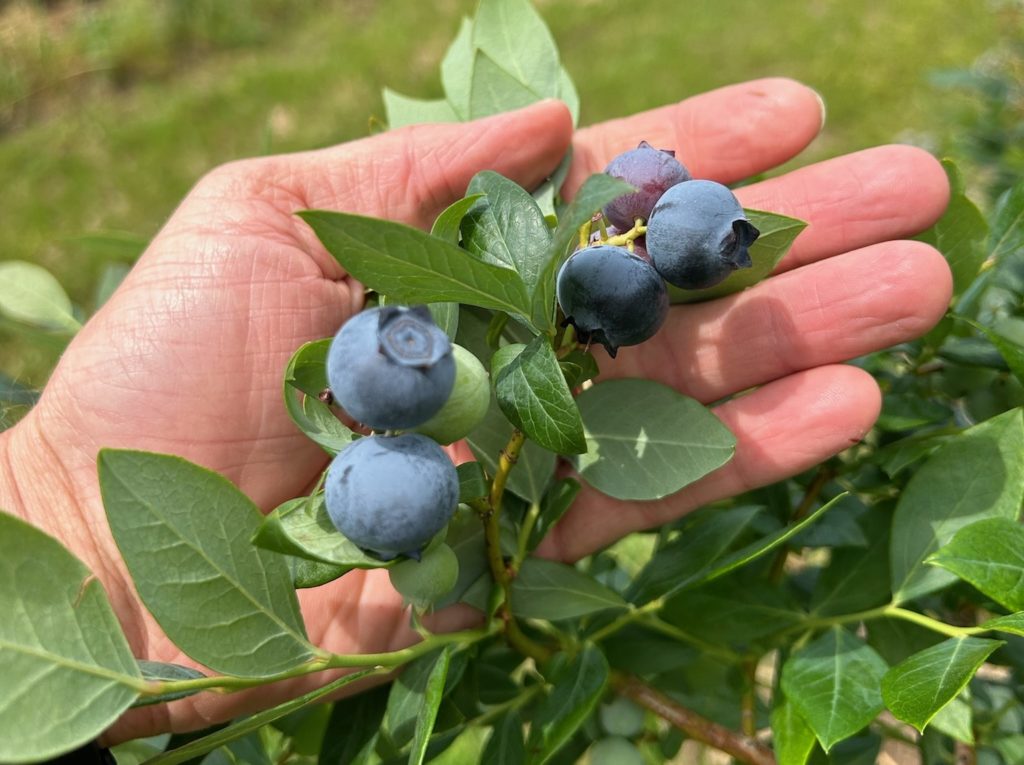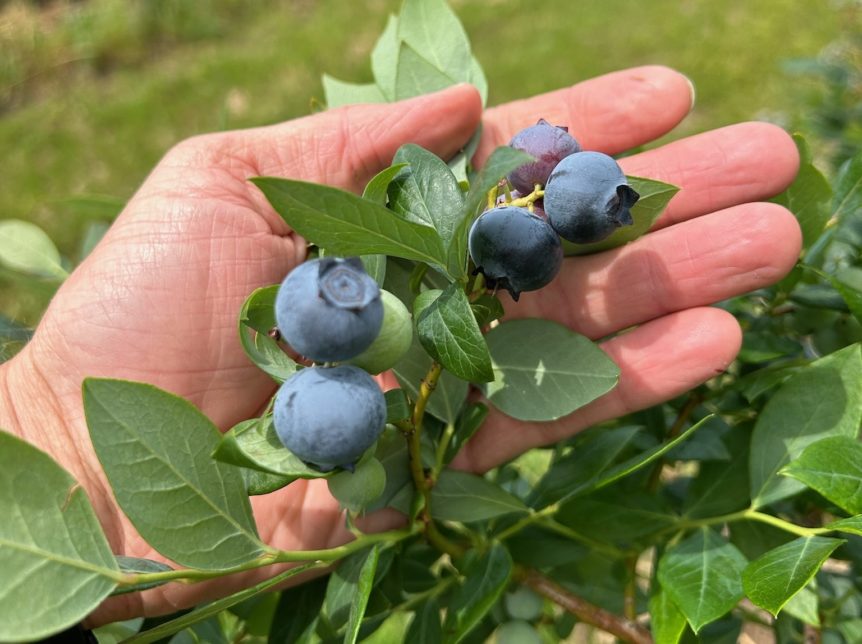
Weekly Field Update
Clemson Extension agents provide updates in South Carolina Grower this week about the status of various crops being produced throughout the state.
Statewide
Jhessye Moore-Thomas
- As the end of first year of the Climate-Smart Grown in South Carolina program is approaching, leafy greens growers are preparing for verification visits.
- Enrollment in the leafy greens program is currently full, but interested growers are encouraged to visit the Climate-Smart website and fill out the interest form.
Coastal Region
Anna Sara Hill
- Watermelons are growing nicely. The runners from some of the earlier plantings are beginning to move off the plastic. Some of the older leaves are exhibiting signs of wind damage and sand blasting from the strong winds we had at the beginning of April. The new flush looks good and healthy. Cucumber beetles have been noticed in some fields, especially in fields that are following a corn rotation from the previous year. Treat with Admire or Venom to regain control. This will also help with other insect pests and mites. Early treatments for protection against foliar disease is also important. Copper Manzate followed up with Baythroid would be advisable for early season sprays.
- Blueberries appear to be ripening nicely, and picking should begin in a couple of weeks. I did observe some terminals that had dead flush probably caused by the strong wind, but it should not affect the overall health of the plant.
Zack Snipes
- It got really hot really fast in the Lowcountry. This uptick in temperature has made the crops hit the fast forward button.
- I am seeing some unharvested lettuce and brassicas bolting in the fields where growers didn’t get to them in time.
- Strawberries, overall, look pretty good, but on some farms, they are struggling with plant die off right now. I think the added stress of the heat and an earlier crop load combined with some pathogens are contributing to this die off. I still recommend growers send pathology samples to our lab. The best disease management for next season is knowing what killed your plants this season.
- Squash and zucchini are beginning to come to market as well as blueberries.
Midlands
Rob Last
- We received some welcome rainfall over the weekend after near-record temperatures this last week.
- Regularly scouting fruit crops for fruit diseases may become more problematic after the rainfall. Remember to rotate fungicide modes of action.
- Thrips numbers are beginning to increase in crops, typically Eastern flower thrips. However, keep scouting closely for evidence of bronzing on strawberry fruit.
- I have seen some sunburn in strawberry crops this week, characterized by an area on the fruit typically near the calyx, which stays pale and soft. Eventually, this lesion will appear.
- Leafy greens are looking good. We see increasing numbers of diamondback moths in brassicas.
- Tomatoes, peppers, squash, cucumber and sweetcorn are all developing well. Remember to keep scouting for mites and disease symptoms in these crops.
- Crops coming to market include strawberries, early blueberries very soon and leafy greens.
Sarah Scott
- Last week brought us above-average temperatures and a weekend cool-down with some much-needed rain. Most areas had hit-and-miss showers and not much in the way of measurable rainfall, but every little bit helps.
- Strawberry crops are coming in heavy now, with the biggest issues in the field still being spider mites and some phytophthora. Thrips damage is starting to show up in some areas. The change in temperatures and moisture from the weekend will likely slow fruit down a bit and potentially give way to some gray mold flare-ups.
- The peach crop is heavy, so we are still thinning to get nice fruit sizing. Bacterial spot is starting to show up on some foliage, and borer damage is notable in fields that went untreated last season. We are watching for our next San Jose scale crawler peak as populations seem to be high this year. We should be about 10 days out for the Ridge.
- Vegetables are looking good with minimal issues as of now.
Pee Dee
Christiana Huss
- It’s been hot and dry this week, so growers have needed to adjust their irrigation schedules accordingly.
- Strawberries are abundant and getting sweeter as the season goes on. Growers seem to have two-spotted spider mites under control but continue to scout for them.
- Keep an eye out for diamond back moth caterpillars. I have seen them in abundance on some Brassica greens.
- Watermelons, peppers, tomatoes and summer squash are being planted. Very exciting to see the start of summer crops!
Brittney King
- We had cooler temps and rain yesterday/last night, which seemed to give some fields the moisture that they needed. However, the hot, sunny weather over the past week had strawberry growers picking as often as possible to remove over-ripe fruit and to prevent sunscald.
- Blackberries are flowering, and some varieties are starting to produce green berries.
- Monitoring muscadine leaves for any fungal disease that could spread to the fruit later is important. Leaf diseases like bitter rot, black rot, powdery mildew and angular leaf spot on muscadines can be treated in the pre-bloom stage (bud break to bloom) with a fungicide like Manzate 200DF. It has a 66-day PHI, so it will need to be applied as early in the season as possible. For a list of organic and conventional management options for muscadine fungal diseases, please visit the 2024 SE Regional Muscadine Grape IPM Guide on pages 16-19.
- Leafy greens like collards, lettuce and cabbage are being harvested at good volumes, and solanaceous crops like tomatoes, peppers and potatoes are progressing very well.
Upstate
Andy Rollins
- The peach crop is still in good shape. Growers need to focus on thinning the crop and keeping protectant fungicides and insecticides on weekly. We had slight cold damage from March 19, and some hail damage this weekend. Thankfully, these are fairly mild problems at this point. Some growers are doing their follow-up split fertilization.
- Following the rain, we have water damage in strawberries. Growers need to remove these fruit, as they will be colonized by harmful fungi like Botrytis grey mold and others. Some sunscalled cases are being reported. Although it can be caused naturally by water and excessive heat, this problem is commonly caused by the use of silicone-based surfactants. I have proven this on-farm with siloxane-based surfactants sprayed during the hot part of the day. If the fungicide label does not call for a surfactant, you shouldn’t be using one.
- Many vegetable crops have been planted across the upstate.










